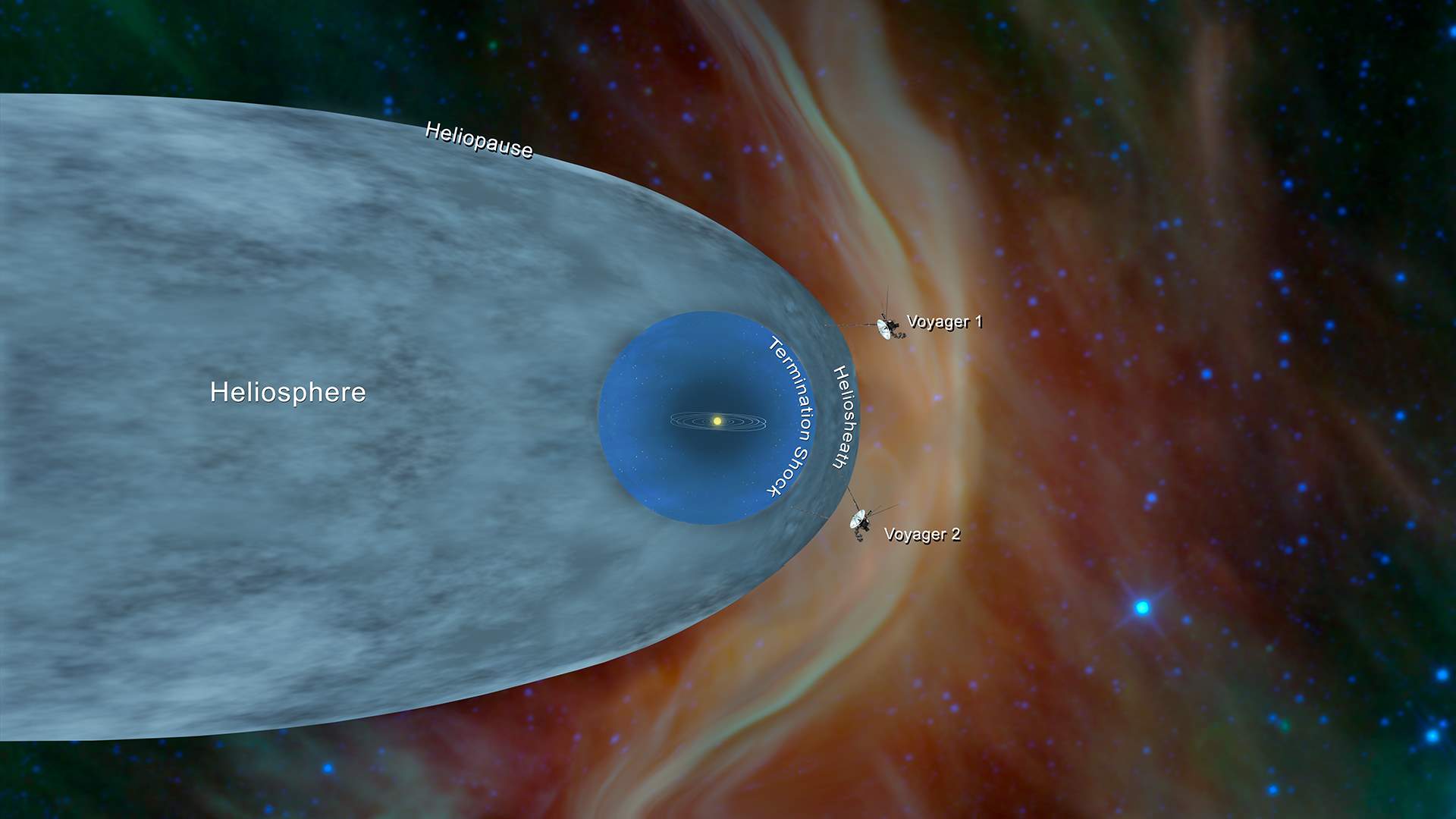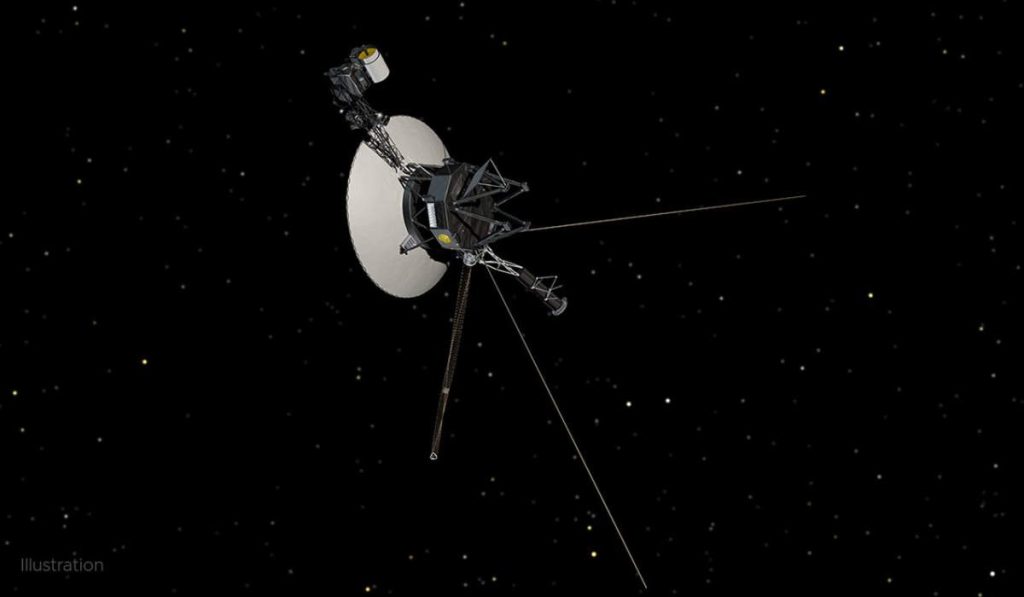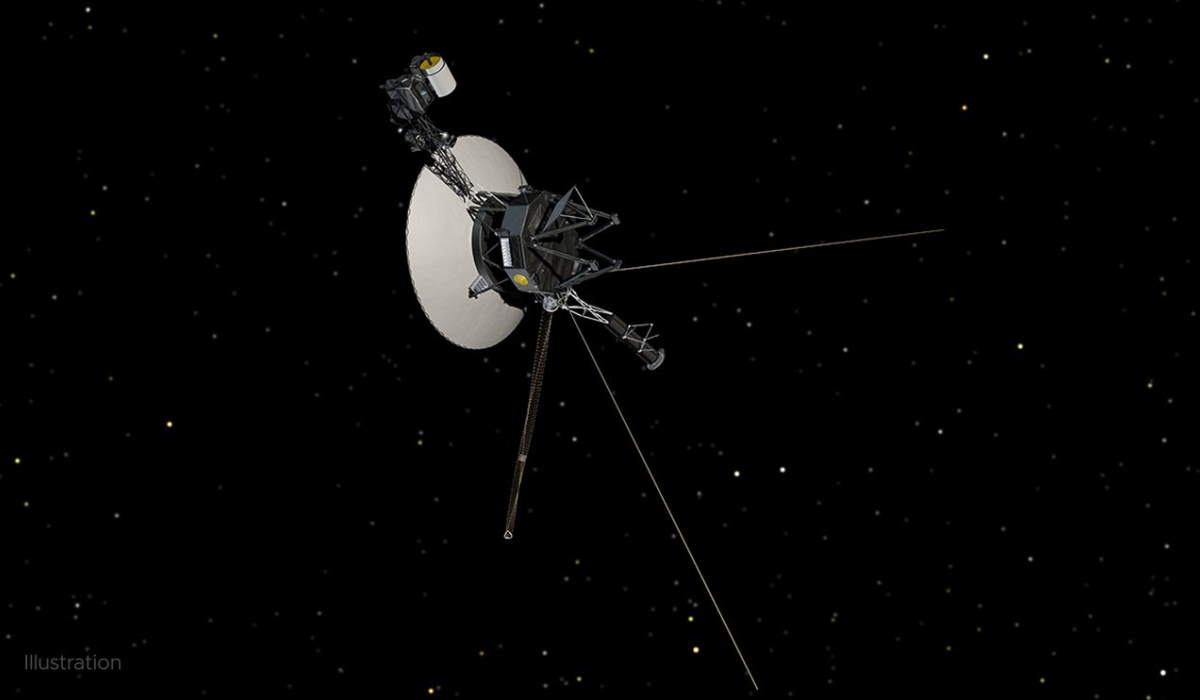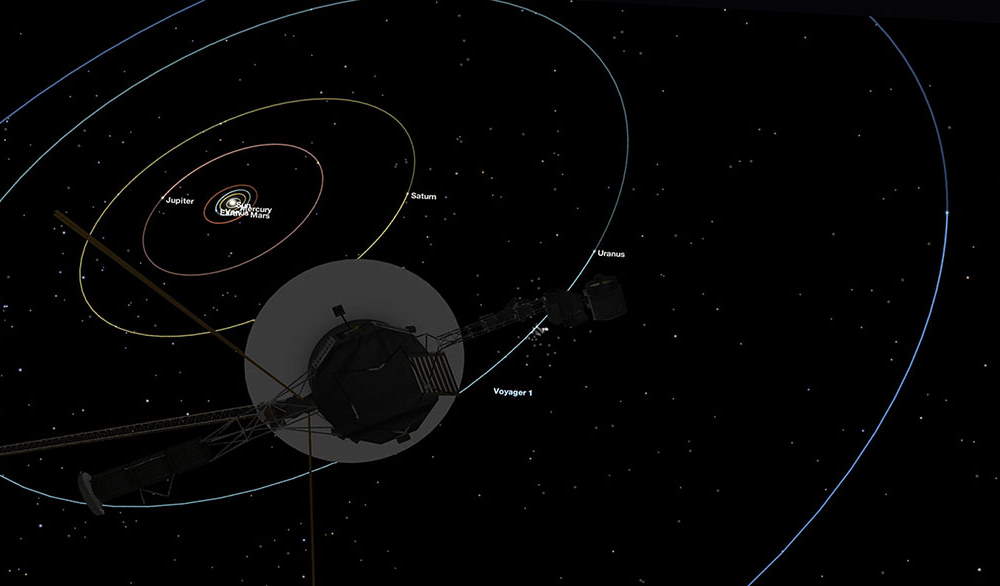On August 25, 2012, NASA’s Voyager 1 spacecraft crossed the heliopause, the theoretical boundary of our solar system where the Sun’s solar wind is stopped by the interstellar medium, and became the first spacecraft in interstellar space.
Today’s (August 25) story of what happened this day in Science, Technology, Astronomy, and Space Exploration history.
Voyager 1: the first spacecraft in interstellar space
Voyager 1 is a space probe launched by NASA on September 5, 1977, 16 days after the August 20 launch of its twin, Voyager 2.
On December 19, 1977, Voyager 1 overtook Voyager 2. The two were sent on different trajectories, and Voyager 1 was put on a path to reach its planetary targets, Jupiter and Saturn, ahead of Voyager 2.

On March 5, 1979, it performed a Jupiter flyby. Saturn flyby followed on November 12, 1980.
Voyager 1 performed its last flyby at 880,440 km (547080.052 miles) from Saturn’s moon Hyperion on November 13, 1980, and its solar system exploration phase has ended.

After completing its primary mission, Voyager 1 was commanded by NASA to turn its camera around and take a photograph of Earth across a great expanse of space, at the request of Carl Sagan. On February 14, 1990, it took probably the most iconic photo of Earth, dubbed the “Pale blue dot“, from a record distance of about 6 billion kilometers (3.7 billion miles, 40 AU (see notes 1) from Earth.
Then, almost 35 years after its launch, on August 25, 2012, Voyager 1 crossed the heliopause, the theoretical boundary of our solar system where the Sun’s solar wind is stopped by the interstellar medium, and became the first spacecraft in interstellar space.
Its twin, Voyager 2 crossed the heliopause into interstellar space on November 5, 2018.
Video: Voyager 1 reaches interstellar space
The video below, published by the NASA Jet Propulsion Laboratory channel, discusses Voyager 1’s historic milestone, becoming the first spacecraft in interstellar space.
August 20 in Science, Technology, Astronomy, and Space Exploration history
- 2012: Voyager 1 passed the heliopause and became the first spacecraft in interstellar space
- 1989: Voyager 2 performed the first Neptune flyby
Notes
- The astronomical unit (AU) is a unit of length, roughly the distance from Earth to the Sun. Since 2012 it has been defined as exactly 149,597,870,700 meters or about 150 million kilometers (93 million miles).
Sources
- “Voyager 1 – the Interstellar Mission” on the NASA website
- Voyager mission page on the NASA Jet Propulsion Laboratory website
- Voyager 1 on Wikipedia
- Moon Landings: All-Time List [1966-2025] - February 2, 2025
- What Is Max-Q and Why Is It Important During Rocket Launches? - January 16, 2025
- Top 10 Tallest Rockets Ever Launched [2025 Update] - January 16, 2025

